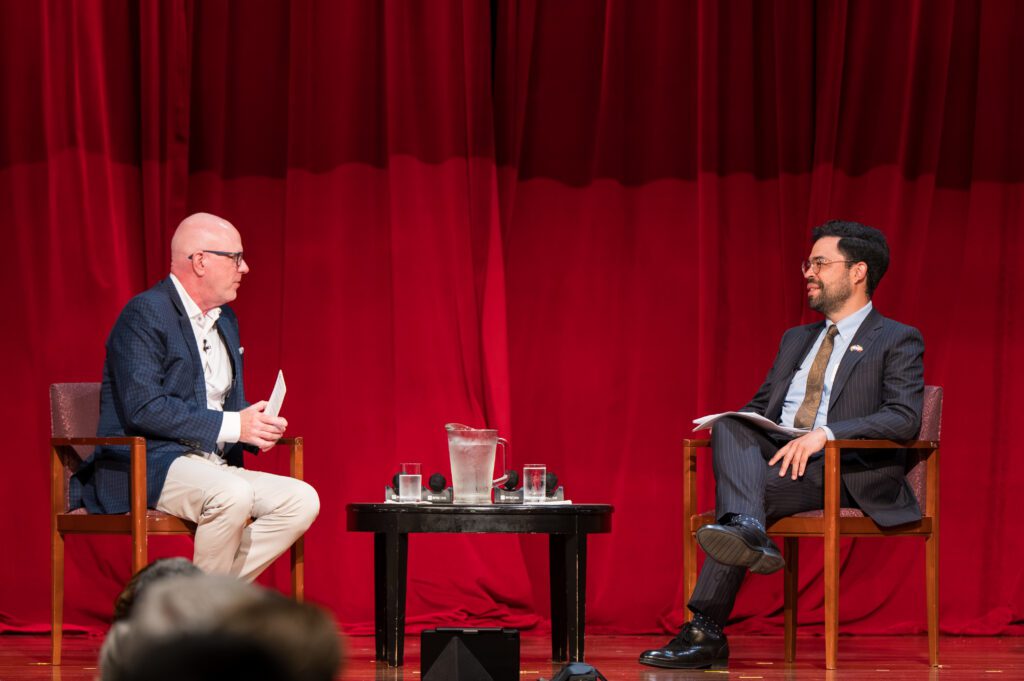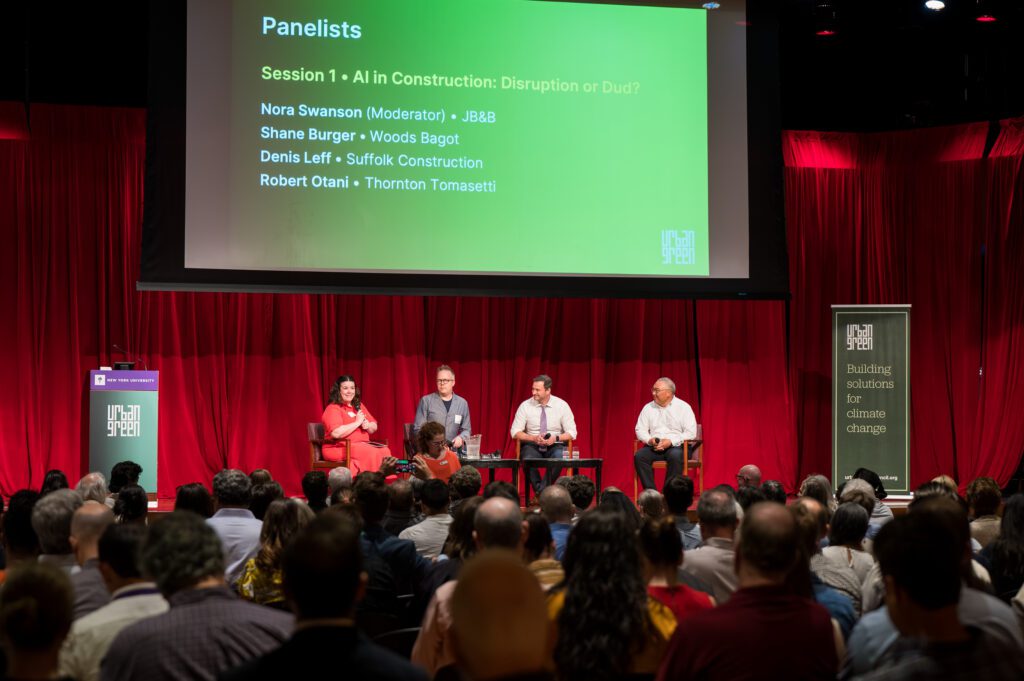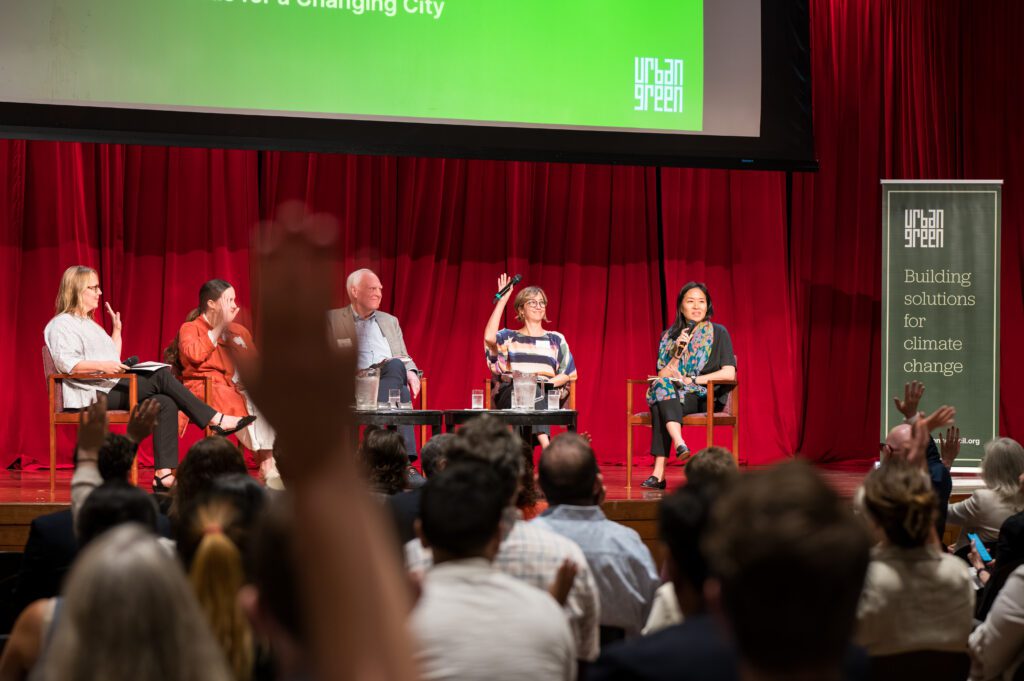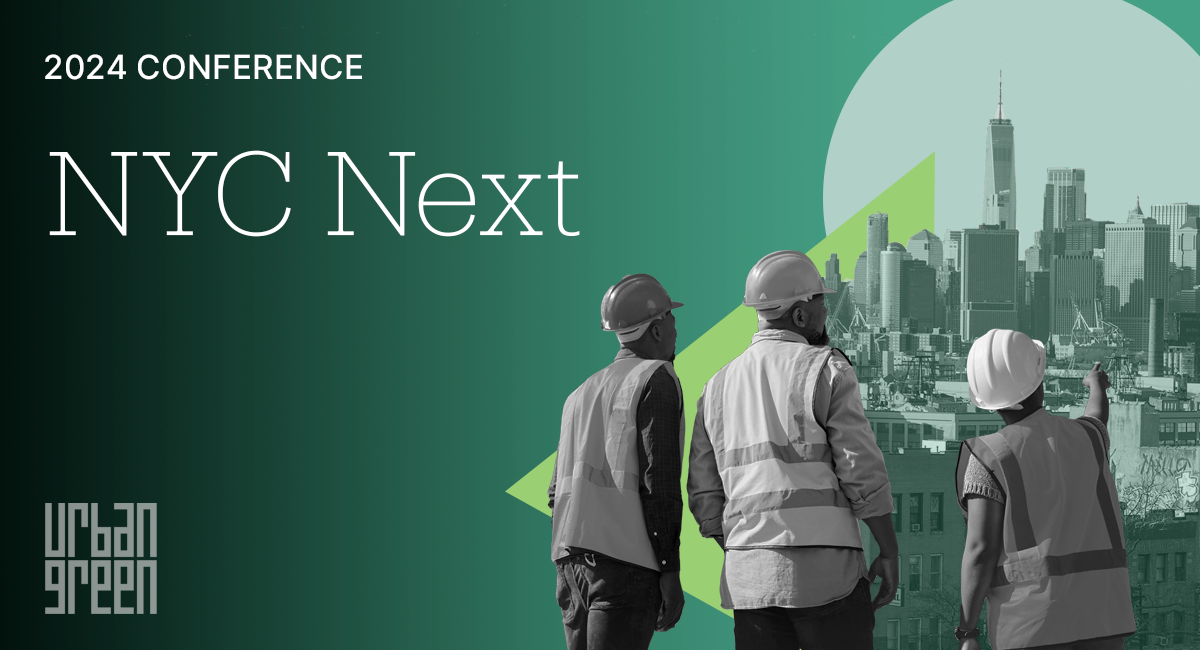Our 2024 conference explored three key trends shaping the future of building in NYC.

the Executive Director of the NYC Mayor’s Office of Climate and Environmental Justice at NYC Next.
Original publication by Urban Green Council • June 25, 2024
On June 3, building professionals gathered at NYU for the 2024 Urban Green Conference: NYC Next. At this year’s conference, a one-of-a-kind group of sustainable building experts examined the city’s efforts to achieve its net zero by 2050 goals and unpacked three key trends shaping the future of buildings and construction.
2024 is a pivotal year for building decarbonization in New York City, from the first compliance year for Local Law 97 to new initiatives from the Mayor’s Office of Climate and Environmental Justice (MOCEJ). Elijah Hutchinson, the Executive Director of MOCEJ, kicked off the afternoon by unpacking the city’s efforts to achieve key climate targets through innovative policy measures. His keynote conversation was followed by three panel discussions, where experts weighed in on the usefulness of artificial intelligence (AI) in construction, advancements and challenges in heat pump water heater installations, and ongoing efforts to reduce embodied carbon in buildings.
The potential of AI
In the first session of the day, “AI in Construction: Disruption or Dud?”, experts explored the transformative potential of AI. Although AI may initially evoke images of a cartoonish sidekick—like the second coming of Microsoft Clippy, the panelists joked—it’s not just a simple tool. Rather, AI is a catalyst for refining our entire approach to building design and construction. AI’s ability to process vast amounts of sensory input allows for faster data analysis. Project teams are already starting to use this tool to gain quicker insights into predicted building performance during design and mitigate job site safety issues during construction. As Denis Leff of Suffolk Construction described, “AI can read past data and give us a daily report on whether we’re expecting an incident to happen so we can take preventative measures before accidents occur.”

As reliance on AI grows, however, practitioners must remain vigilant in their responsibility to verify and support the information that it generates. Building professionals are still accountable for the decisions they ultimately make, and need to be able to explain their choices to the communities and stakeholders that they serve. The session concluded with the thought-provoking question: is AI a disruptor or a dud? The answer, as Shane Burger of Woods Bagot succinctly put it, is “yes.” Panelists predicted that in 10 years, the industry will rely heavily on AI, but it’s up to us to ensure that this powerful tool is developed to be used responsibly and effectively.
Heat pump water heating: wins and woes
In the second session, “Turning Up the Heat (Pumps) on Hot Water,” panelists explored the pivotal role of heat pump water heaters in NYC’s progress toward building decarbonization. As Jennifer Leone, from the NYC Department of Housing Preservation and Development, noted, “We already require all electric new construction, and that’s an important priority because those buildings will be here for a long time.” Heat pumps are a game-changer in our efforts to create sustainable and resilient urban environments, and the landscape is evolving quickly: manufacturers are bringing smarter products to market and practitioners are taking a more holistic approach to system installations.
Panelists highlighted that despite initial expectations that electrifying domestic hot water would be straightforward, significant challenges and economic hurdles remain. Nicole Ceci of Steven Winter Associates described difficulties in getting projects to pencil out and explained how time-consuming it is to stack financial incentives with different timelines and requirements. The discussion underscored the need for a collaborative effort between designers, installers and policymakers to overcome these barriers. To close the session, Sara Bayer, from Magnusson Architecture and Planning, noted, “We need gas to cost what it really costs; the economics need to change.” Ceci added, “We need incentive programs that cover both the heat pump installation and post-installation monitoring and verification sensors so we can have robust case studies.” These insights illustrated the work that remains to effectively implement heat pump water heaters and advance NYC’s electrification goals.
Moving the industry on embodied carbon
The final panel of the day, “Embodied Carbon is Here to Stay,” delved into the pressing need for regulatory frameworks and actionable strategies to reduce embodied carbon in construction. Moderated by Lendlease’s Amanda Kaminsky, the discussion highlighted the critical distinction between operational and embodied carbon in building lifecycles. As Kaminsky aptly put it, “While operational carbon accumulates over time, embodied carbon is emitted up front and can be significantly minimized through the decisions we make today.”

Tess McNamara for Session 3.
The panelists discussed how the market has coalesced around four key products on which to focus embodied carbon reduction targets: concrete mixes, asphalt mixes, glass and steel. Central to the conversation was New York State’s pioneering role in introducing regulations focused on low Global Warming Potential (GWP) concrete. Chris Erickson, from Climate Earth Inc., emphasized the transformative impact of setting hard numbers (or concrete metrics, pun intended) for embodied carbon reduction. Just as the concrete industry has historically met standards for strength, workability and durability, the introduction of a carbon metric for procurement can drive innovative advancements. In a forward-looking conclusion, each expert on the panel offered recommendations that would pave the way for reductions in embodied carbon across the industry. Suggestions were aimed at several key stakeholders and included: encouraging designers to change their specifications to allow for the use of alternative materials with lower embodied carbon and the reuse of building materials, developing incentives for retrofitting existing buildings, and integrating carbon as a hard metric in the procurement process.
Moving forward toward a net zero future
To achieve net-zero carbon emissions by 2050, the way we build in NYC must continue to change. But what will these changes be? Each session at NYC Next highlighted an emerging trend that still requires some “figuring out” to reach its full potential. By sharing their perspectives and experiences, these industry leaders stressed the importance of collaborative efforts to drive the city’s sustainability agenda forward. In a fitting summary, Erickson stated, “I’m delighted to be in front of a group of architects, engineers, and policymakers because climate change is the defining trend for humanity, and you are the people who are going to make a difference. You’re leading here in New York City and New York State, so thank you so much.”
2024 Conference: NYC Next
At our 2024 conference, experts in sustainable buildings explored AI in construction, heat pump water heaters, and solutions for cutting embodied carbon.
Local Law 97
NYC’s groundbreaking climate legislation sets carbon emissions caps for large buildings starting in 2024.
Embodied carbon 101
Embodied carbon will play a key role in our path to decarbonizing buildings. Aurora Jensen joins Shruti Narkar to discuss how.
